You’re likely familiar with the RING movies (from the Japanese RINGU to the ‘02 Hollywood remake), but you may not know that, as with many successful films, they were books first. Five of them, to be exact, written by the shrewdly talented Koji Suzuki. All are works of unexpected and even brilliant invention and ingenuity. Taken as a whole, the RING cycle is undoubtedly one of the key horror sagas of our time.
The publisher in all five cases was Vertical, who specializes in English translations of quality Japanese genre fiction (including Taichi Yamada’s STRANGERS and Keigo Higashino’s NAOKO)—and yes, as far as I know, all the books outlined below are still in print.
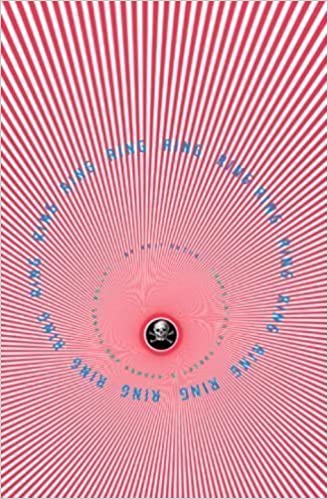 Koji Suzuki commenced his saga with RING, originally published in Japanese in 1991. It was made into a 1996 Japanese TV movie and the 1998 feature RINGU, which in turn inspired two sequels, a prequel, a Korean remake, a 1999 manga, and of course the mega-successful ‘02 Hollywood flick before the long-overdue English translation of the novel finally appeared in 2003.
Koji Suzuki commenced his saga with RING, originally published in Japanese in 1991. It was made into a 1996 Japanese TV movie and the 1998 feature RINGU, which in turn inspired two sequels, a prequel, a Korean remake, a 1999 manga, and of course the mega-successful ‘02 Hollywood flick before the long-overdue English translation of the novel finally appeared in 2003.
Much about the story was changed by the movies. The book is about a male reporter (as opposed to RINGU’S femme protagonist) investigating some mysterious deaths. He discovers that all the deaths are connected to a mysterious videotape containing freaky, hypnotic imagery. This leads him and a freewheeling buddy to investigate the life of a dead psychic woman who made the tape.
If you’ve seen any of the RING films you know the story, although it’s fleshed out far more deeply and satisfyingly here. It turns out that the psychic woman’s unsettled spirit imprinted itself upon the videotape, which brings death to its viewers, having been tinged with not only the hag’s disturbed psyche but also the smallpox virus.
The novel’s prose is simple and straightforward to the point of annoyance, and takes some getting used to. Once the reader has adjusted, though (which I admittedly found a bit of a chore), the experience of reading this book is a compelling one.
SPIRAL was Suzuki’s 1995 follow-up, which appeared in English in 2004. It’s even better than its predecessor.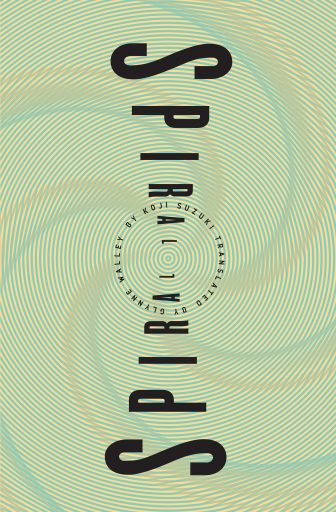
In SPIRAL Suzuki cleverly deconstructs RING’S premise by having the guy who performs autopsies on a number of the virus’ victims commencing a new investigation into the nature of the deadly videotape. It seems the otherworldly virus has more in store for the human race than simply the spread of disease: it means to reproduce itself via the publication of a book written by the possessed protagonist of RING and a subsequent movie adaptation, not to mention an impregnation.
This may all sound a mite outrageous, certainly, but a large portion of SPIRAL’S charm is the unwavering conviction of Suzuki’s prose, and the way he carefully and methodically constructs his narrative. The novel is marred only by what I’m assuming is a stodgy translation that, as in RING, renders Suzuki’s prose in kiddie-book vernacular, complete with quite a few distracting clichés.
LOOP followed in 1998, and it’s easily the looniest book of the lot. The author, you’ll recall, destroyed the world in SPIRAL, leaving himself with nowhere to go. Suzuki solves the problem by positing that the events of the preceding books took place inside the Loop, a computer program that simulates evolution complete with life forms designed to evolve into human beings bearing all the trials and tribulations of the “real” world.
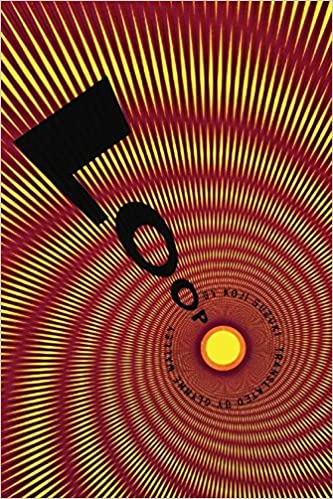 Now it seems that one of the denizens of the Loop, the hero of the first RING, somehow got loose in the real world, where the Ring virus has taken the form of a deadly cancer. It’s up to Kaoru, a wise-beyond-his-years youth, to put things right by traveling to the Arizona desert and entering into the Loop.
Now it seems that one of the denizens of the Loop, the hero of the first RING, somehow got loose in the real world, where the Ring virus has taken the form of a deadly cancer. It’s up to Kaoru, a wise-beyond-his-years youth, to put things right by traveling to the Arizona desert and entering into the Loop.
This novel is irredeemably nutty, but Koji Suzuki’s plotting is, as always, precise and curiously logical. The horror elements of the earlier books are absent this time around, as LOOP exists fully in science fiction territory.
It suffers, as usual, from a crummy translation. In addition, the narrative has far too many loose ends and dangling plot strands for comfort (such as the protagonists’ obsessive tryst with a grief-stricken young woman, a relationship that would seem to promise all sorts of perverse possibilities but delivers none). Fascinating stuff nonetheless.
BIRTHDAY, from 1999, was the fourth entry. It’s a short book consisting of three interrelated stories, all centered on women characters from the earlier books and all revolving around themes of birth.
The book commences with “Coffin in the Sky.” It’s headlined by Mai Takano, the distraught lover of RING’S hapless protagonist. While searching for clues about the latter’s untimely disappearance, Mai falls into a confined space and unexpectedly gives birth.
“Lemon Heart” follows, about the early years of Sadako Yamamura, the villainess of the RING universe. We follow Yamamura as a 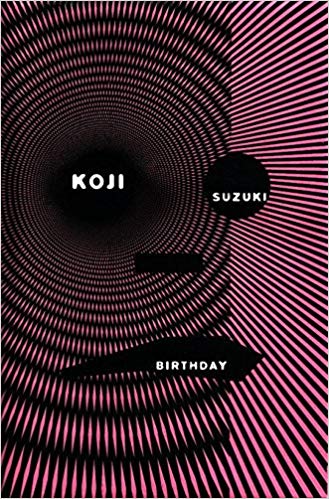 young actress in a theatrical production, where she learns how to psychically imprint her voice on an audiotape…which, as anyone familiar with the RING mythos well knows, has profoundly horrific implications.
young actress in a theatrical production, where she learns how to psychically imprint her voice on an audiotape…which, as anyone familiar with the RING mythos well knows, has profoundly horrific implications.
“Happy Birthday” is told from the point of view of Reiko Segiura, the wife of Kaoru Futami, the hero of LOOP. Kaoru has disappeared into the Loop, leaving Reiko alone to birth their baby. However, she finds a way of entering the Loop so she can communicate with her beloved one last time.
BIRTHDAY is ultimately more of an addendum to the RING series than a legitimate addition. It is worth perusing, though, if only to once again experience Suzuki’s far-out yet methodical imagination, which renders truly crazed flights of fancy with the logic and precision of a good mystery writer. Just make sure you read the previous three novels first!
PROMENADE OF THE GODS (2003) is something of a departure from the earlier books, being a non-supernatural mystery. Still, it does contain many RING-esque themes, including an average joe turned amateur detective to solve a bizarre mystery and a villainous personage who figured in the preceding RING books.
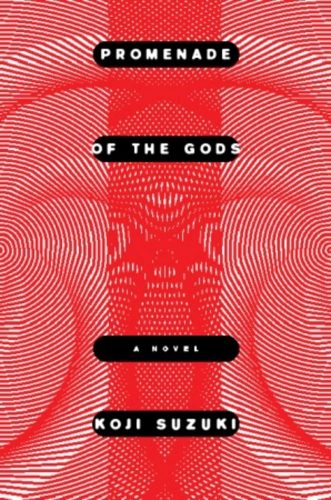 That personage is a guru called Kageyama, who runs a shadowy religious cult. It seems that Matsuoka, a seemingly mild-mannered suburbanite, has joined the cult after abruptly vanishing one day. But that’s only a surmise on the part of his buddy Shirow, who does his best to puzzle out the possible details of his friend’s disappearance, and romances Matsuoka’s wife in the process.
That personage is a guru called Kageyama, who runs a shadowy religious cult. It seems that Matsuoka, a seemingly mild-mannered suburbanite, has joined the cult after abruptly vanishing one day. But that’s only a surmise on the part of his buddy Shirow, who does his best to puzzle out the possible details of his friend’s disappearance, and romances Matsuoka’s wife in the process.
Being the extremely meticulous writer he is, Suzuki gives us far more information on that romance than is probably necessary, making for a somewhat lopsided account. But for the most part the book is a grabber, with an ingeniously worked-out narrative that never takes an expected turn, and boasts a stunner of a climax.
My biggest complaint is with (surprise!) the translation, which is once again rendered in drawn-out kid book fashion. I’ll acknowledge that much of the problem is clearly with the Japanese original, as is evident in the way Suzuki is constantly rehashing the details of his story as one might for a slow or inattentive readership. Perhaps this is part and parcel for Eastern literature, but this Western reader found the paint-by-numbers prose tiresome.
The above aren’t the only English-language books by Koji Suzuki. The fantasy romance PARADISE and the macabre anthology DARK WATER are also available courtesy of Vertigo, and both come highly recommended. However, it’s my contention that the RING saga will be what Suzuki is ultimately remembered for, it being a series no true horror fan can afford to pass up.
